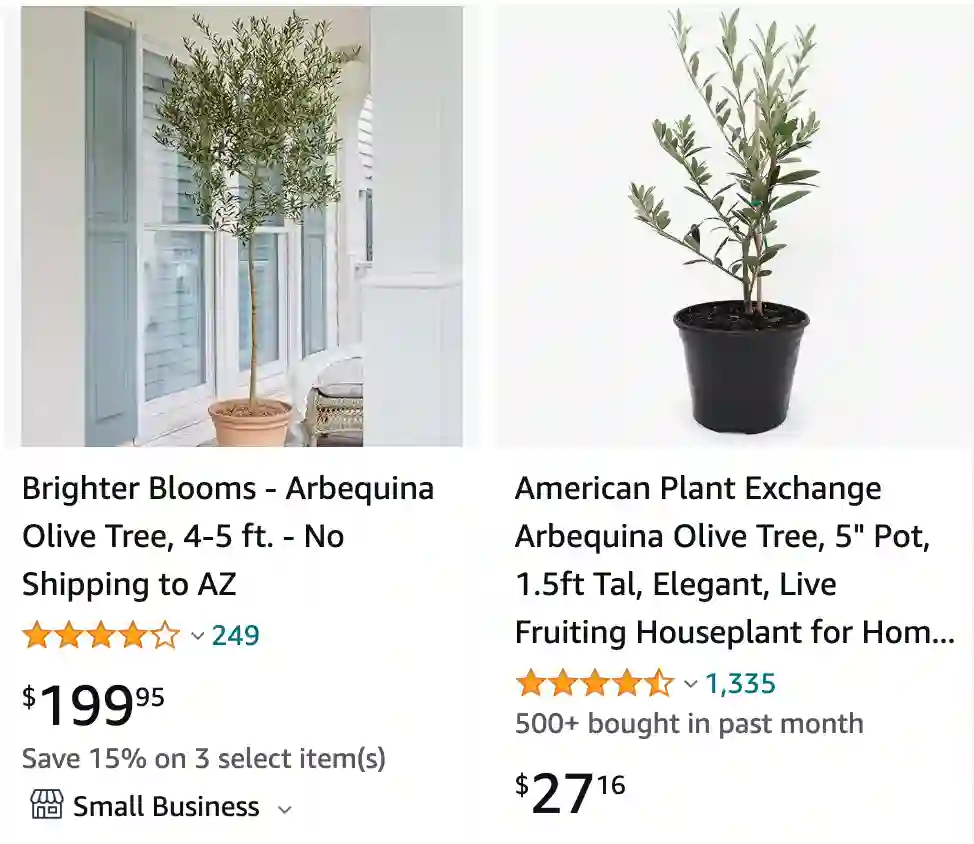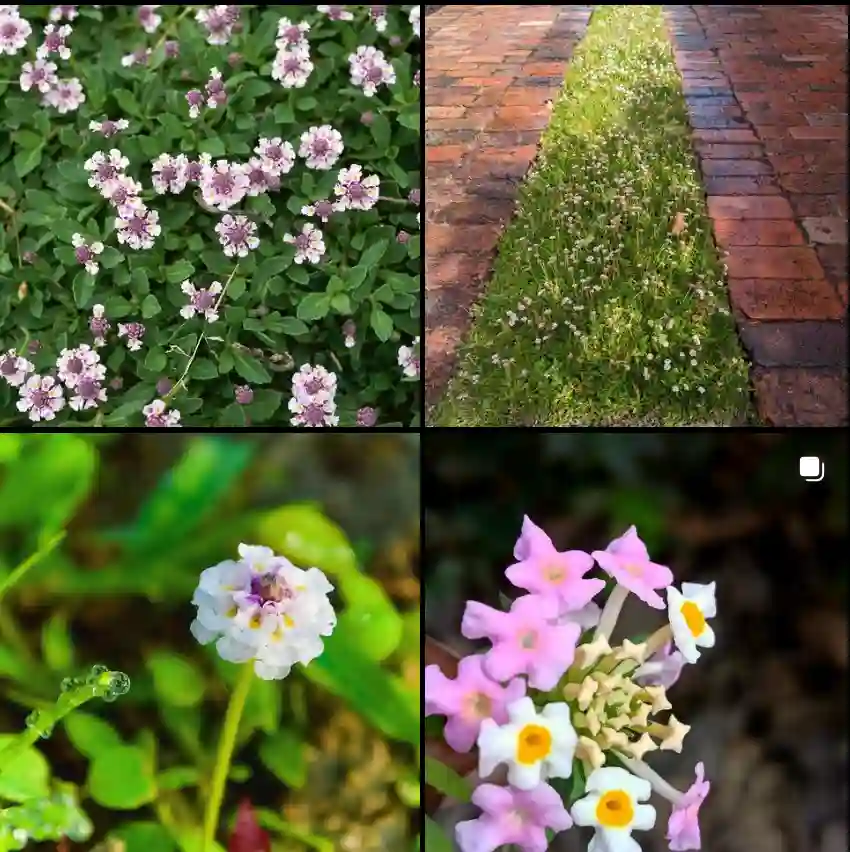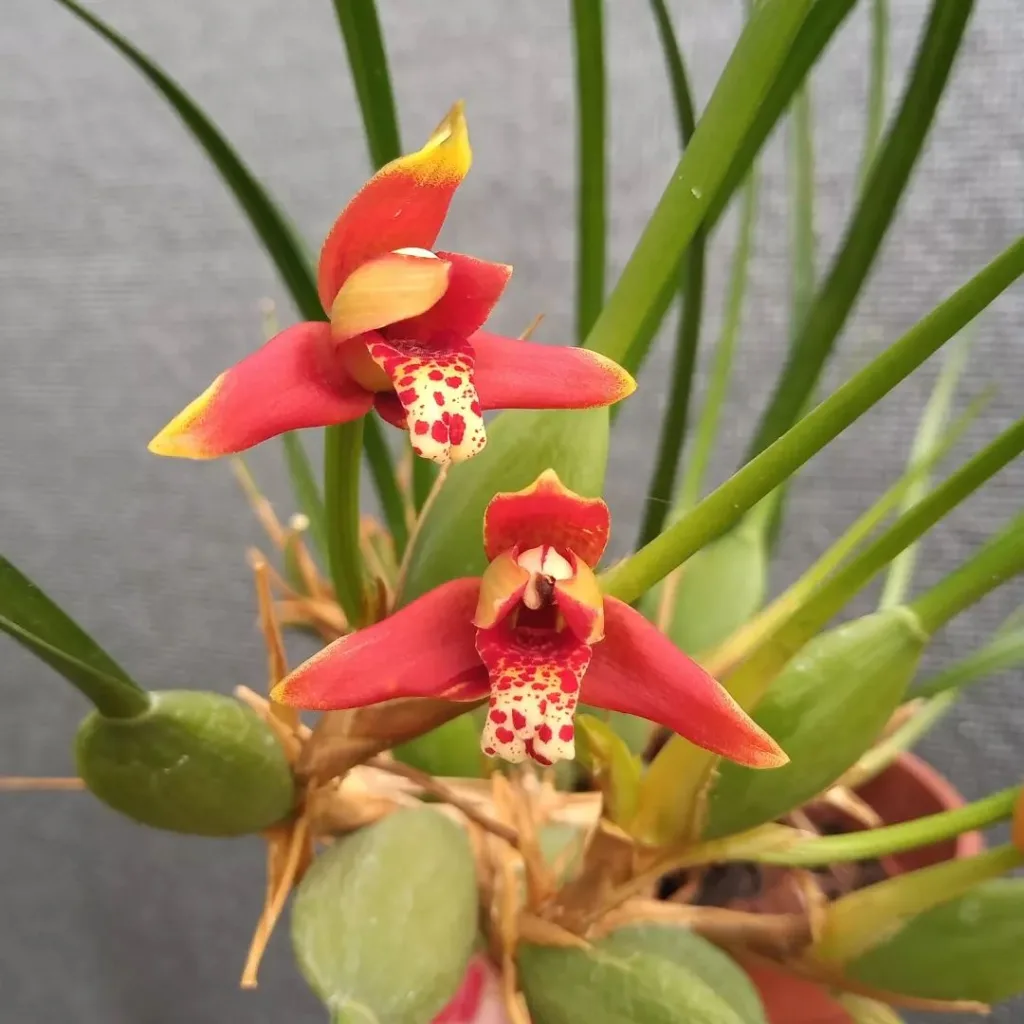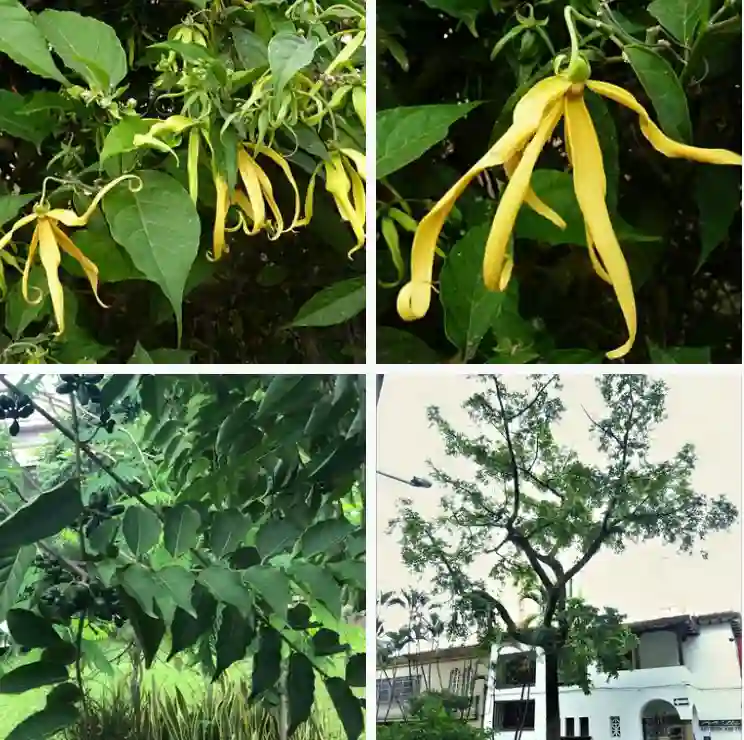
The Olive Tree: A Timeless Beauty in My Garden
When I first brought an Olive Tree (Olea europaea) into my garden, I didn’t just plant a tree—I welcomed a piece of history, culture, and resilience into my life. These trees, steeped in Mediterranean heritage, are more than just plants. They symbolize peace, wisdom, and endurance. Over time, I’ve come to appreciate their grace, utility, and the connection they offer to ancient traditions. Let me share my journey with this iconic species and why it holds a special place in my gardening heart.
12 Species in Genus Olea
The Appeal of the Olive Tree
From the start, the Olive Tree captivated me with its striking beauty. The gnarled trunk, often weathered with age, tells stories of survival. Its silvery-green leaves shimmer in the sunlight, creating a calming, almost ethereal presence. This tree isn’t just about aesthetics; it brings a sense of grounding to my garden, reminding me that beauty lies in resilience.
I chose the Arbequina cultivar, known for its adaptability and smaller size. This variety fits perfectly in urban spaces while still offering that Mediterranean charm. It’s fascinating how the tree manages to stay evergreen, standing out year-round against other plants that shift with the seasons.
Planting and Care: Lessons in Patience
Caring for an olive tree taught me patience and attentiveness. While hardy, it thrives best when its needs are met. I planted mine in a well-draining, sunny spot, mimicking its native Mediterranean environment.
Watering was tricky at first. Olive trees prefer dry soil, so overwatering can be detrimental. I’ve learned to let the soil dry between waterings, ensuring the roots remain healthy. Fertilizing in spring with a balanced mix has kept my tree vigorous, encouraging new growth.
Pruning, though initially intimidating, became a meditative task. Removing dead branches and shaping the canopy not only improved its appearance but also allowed sunlight to penetrate the tree’s heart, fostering healthy development.
A Tree of Many Gifts
What makes the olive tree extraordinary is its generosity. Beyond its ornamental value, it’s a productive tree. While it took a few years for mine to bear fruit, the wait was worth it. Harvesting those first olives was a joyful experience.
I experimented with curing the olives using brine and vinegar, and while my first batch wasn’t perfect, it deepened my appreciation for the craft behind olive production. For those who may not want to invest in curing, the tree still offers an abundance of aesthetic and ecological benefits.
Its leaves, often overlooked, have antioxidant properties. I’ve dried some to make tea, a calming ritual that connects me further to the tree’s offerings.
The Olive Tree in a Changing World
In today’s climate-conscious era, the olive tree stands as a model of sustainability. Its drought tolerance makes it ideal for water-scarce areas. As I face changing weather patterns in my region, I find comfort knowing my olive tree can adapt.
Moreover, its ability to sequester carbon while needing minimal resources aligns with my efforts to create a sustainable garden. This tree isn’t just a relic of the past—it’s a solution for the future.
Cultural Connections
One of the unexpected joys of owning an olive tree has been the cultural connection it fosters. I’ve learned about its significance in Greek mythology, where it symbolized peace and prosperity. In biblical traditions, the olive branch is a universal sign of hope.
As I walk through my garden, I feel linked to the countless generations who’ve tended to olive trees before me. This connection adds depth to my experience, transforming gardening from a hobby into something more profound.
My Olive Tree: A Personal Reflection
The olive tree has taught me about endurance, adaptability, and grace. Watching it thrive in my garden is a constant reminder of nature’s resilience. It’s not the flashiest plant, but it’s one that grows on you—slowly, surely, and with quiet strength.
If you’re considering adding an olive tree to your garden, I wholeheartedly recommend it. Whether you’re drawn to its historical roots, ecological benefits, or sheer beauty, this tree offers something truly special. For me, it’s more than a tree; it’s a living legacy.
FAQs
How long can an olive tree live?
I visited a friend’s olive grove in Crete last year, and it was mind-blowing to see these gnarled giants with trunks thicker than a car. They said some trees there were thousands of years old! It’s hard to imagine something living that long. Even the younger ones, a few hundred years apparently, were unlike any tree I’d seen before. Their branches twisted and turned in a way that spoke of battling strong winds for centuries. It makes you realize how fleeting human life can be compared to the patient resilience of nature.
How to grow an olive tree from seed?
I actually tried growing an olive tree from a pit I got from a delicious salad last year! It was more work than I expected. First, I soaked the pit for a day or two to loosen it up, then cracked it carefully with a nutcracker (be careful not to smash the seed inside!). I planted it in a pot with a well-draining mix of soil and sand, keeping it moist but not soggy. The waiting game was the hardest part – it took forever to sprout! Finally, after about two months, a tiny little green shoot emerged. It’s grown slowly but steadily since then. I keep it in a sunny spot indoors and bring it outside on warm days. It’s not exactly a towering olive grove yet, but it’s fun to see it grow and know I nurtured it from a seed.
Where to buy a olive tree?
There are a couple ways to go about getting an olive tree, depending on what you’re looking for. For a smaller tree, I’ve seen them at places like garden centers and even some hardware stores. They’re usually young and relatively inexpensive, which is perfect if you want a houseplant or something for a smaller patio. The downside is you won’t get a ton of choice in varieties or sizes.
If you’re looking for a more established tree, or a specific variety for eventually harvesting olives, then a dedicated nursery or online retailer specializing in olive trees is the way to go. They’ll have a wider selection and can give you advice on choosing the right tree for your climate and needs. I found a great selection online from a nursery that even ships nationwide, so you don’t have to be limited to what’s local.
How big does olive tree get?
That depends a lot on the kind of olive tree you get and where you plant it! The ones I saw in Crete, those ancient giants, were huge – we’re talking massive trunks and branches reaching way up. But those are probably special varieties that have thrived for centuries in the perfect climate. Most olive trees I see for sale are much smaller, like the ones at the garden center that might only be a few feet tall.
Even when you plant them in the ground, they won’t all become giants. There are different olive tree types, some naturally stay on the smaller side, which is perfect if you don’t have a ton of space. Plus, even bigger varieties can be kept in check with some pruning. Mine that I’m growing from a seed is still just a little sprout, but I know I can keep it happy in a pot and prune it to stay a manageable size for indoors. So, the size really depends – do some research on the kind of olive tree you get and think about how much space you have for it to grow.
How often to water olive tree?
Keeping my olive tree happy water-wise has been a bit of a learning curve. At first, I overwatered it a couple of times, and let’s just say the droopy leaves weren’t a good sign. Now I’ve learned the golden rule: it’s better to underwater than overwater. Especially for olive trees, since they’re used to a drier climate.
For my little guy growing indoors, I stick my finger in the soil about once a week. If the top inch or two feels dry, it’s watering time. I soak it thoroughly until water runs out the drainage holes, then let it dry out again before watering. In the winter, I water it even less often, maybe every other week or so.
I imagine for a bigger tree outdoors, especially during hot summers, it might need watering more often. But again, the key is checking the soil. If you’re not sure, err on the side of caution and wait until it feels dry to the touch. There are also moisture meters you can stick in the soil, which might be helpful for beginners like me.
Can you grow an olive tree from a pit?
Absolutely! I actually tried it myself last year with a pit from a delicious salad. It’s definitely doable, but it takes some patience and TLC. Here’s the thing: store-bought olives are often cured or processed, and those pits might not germinate well. If you want the best shot, you want a fresh pit straight from a ripe olive.
Even with a fresh pit, it’s not a guaranteed success story. Germination rates can be lower than when you buy a seedling from a nursery. But hey, there’s something pretty rewarding about growing a whole tree from scratch, right? So if you’re up for a challenge, go for it! There are plenty of online guides that walk you through the steps, soaking the pit, prepping the soil, and waiting (oh, the waiting!). Good luck!
How much is an olive tree?
The price of an olive tree can vary quite a bit depending on a few factors. I’ve seen them for as little as $50 or so at hardware stores and garden centers. These are usually younger, smaller trees that are perfect if you want a houseplant or something for a pot on your patio. The downside is you won’t get a lot of choice in variety or size.
If you’re looking for a more established tree, especially a specific variety to eventually harvest olives, then the price goes up. At dedicated nurseries or online retailers specializing in olive trees, you might be looking at a few hundred dollars or more. Of course, the really old, giant olive trees can cost thousands or even tens of thousands of dollars, but those are for serious collectors, not your average backyard gardener!
Why is my olive tree dropping leaves?
There could be a couple reasons why your olive tree is dropping leaves. Let’s think through the possibilities:
Watering: Olive trees are Mediterranean natives, so they’re used to a drier climate. Overwatering is a common culprit for leaf drop. Stick your finger in the soil – if it feels damp more than an inch or two down, you might be giving it too much. On the other hand, underwatering can cause leaves to drop too. Try sticking to a watering schedule where the soil dries out somewhat between waterings.
Light: Olive trees are sun-worshippers! They need at least 6 hours of direct sunlight a day to thrive. If yours is in a shady spot, that could be why it’s dropping leaves.
Temperature: Sudden temperature changes can stress an olive tree, especially if it’s been growing indoors. If you just moved it outside for the summer, or brought it in from the cold, that could be a shock to the system. Try to keep it in a location with consistent temperatures.
Pests or diseases: Less likely, but check the leaves for signs of pests like insects or mites, or signs of disease like spots or discoloration. If you see something suspicious, you can do some research online or consult a nursery for advice on treatment.
Does olive tree need a lot of water?
No, olive trees actually don’t need a lot of water, especially compared to other plants. They’re native to the Mediterranean, where summers are hot and dry, so they’ve adapted to thrive with less frequent watering. Overwatering is actually a more common problem for olive trees than underwatering.
Here’s a good rule of thumb: it’s better to underwater than overwater an olive tree. Their roots can rot if they sit in soggy soil for too long. Stick your finger in the soil about an inch or two deep. If it feels dry, it’s watering time. If it still feels moist, hold off for a few days.
Here’s a breakdown of watering needs for different olive trees:
Young trees: These will need slightly more frequent watering than established trees, maybe once a week during the hot summer months. But still, let the soil dry out a bit between waterings.
Mature trees in ground: These might only need watering every few weeks during dry periods, especially in summer. Established root systems can tap into moisture deeper in the ground.
Potted trees: These will dry out faster than trees planted in the ground, so you might need to water them every 3-5 days in the summer. Again, the key is checking the soil moisture.
Remember, these are just general guidelines. The exact watering needs of your olive tree will depend on factors like the size of the tree, the climate you live in, and how much sun it gets. Always best to err on the side of underwatering and adjust your watering routine as needed.
Does olive tree need full sun?
Absolutely! Olive trees are sun worshippers through and through. In their native Mediterranean climate, they soak up sunshine for most of the day. To thrive, they need at least six to eight hours of bright, direct sunlight daily.
Think about those sprawling olive groves you see in pictures – bathed in sunshine and seemingly endless blue skies. That’s the kind of environment they love. Less sunlight can definitely impact your olive tree’s health. It might grow slower, produce fewer (or even no) olives, and become more susceptible to pests and diseases.
If your olive tree isn’t getting enough sun, you might start to see signs like:
Less vibrant green leaves
Leaf drop
Branch die-off
Stunted growth
If you’re keeping your olive tree in a pot, you can easily move it around to find the sunniest spot in your yard or on your patio. For in-ground trees, you might need to consider pruning nearby trees or shrubs that might be casting too much shade.
What temperature can an olive tree survive?
Olive trees are surprisingly tough when it comes to temperature, but they do have their limits. They prefer the warmth of the Mediterranean, so ideally you want to keep them in a climate with mild winters and hot summers.
Here’s a breakdown of what olive trees can handle:
Ideal: Temperatures between 60-68°F (15-20°C) year-round are perfect for olive trees. They’ll thrive in this kind of warm and sunny environment.
Heat tolerance: Olive trees can handle high summer temperatures, up to 104°F (40°C) without any problems.
Cold tolerance: Mature olive trees can survive short dips down to 15°F (-9°C) for a short period. However, prolonged exposure to freezing temperatures can damage or kill the tree. Young olive trees are even more sensitive to cold.
Here are some things to keep in mind:
Winter chills: While they don’t love freezing winters, some cold weather is actually beneficial for olive trees. A couple of months of temperatures in the low 40s (around 4°C) can help with flower and fruit production.
Wind chill: Cold winds can be more damaging to olive trees than the actual temperature. If you live in a windy climate, especially one with cold winters, you might need to provide some protection for your olive tree during the coldest months.
Overall, olive trees are pretty adaptable when it comes to temperature, but they definitely prefer the warmth. If you’re not sure whether your climate is suitable, it’s always best to research specific olive tree varieties that might be more cold-hardy.
How long for olive tree to fruit?
The wait for your olive tree to fruit depends on a few factors, but it usually takes somewhere between 3-7 years to see those first little olives. Here’s what can influence how long it takes:
Variety: Some olive tree varieties are known for being earlier fruiters. Arbequina and Koroneiki, for example, might start producing olives as early as 3 years old. Other varieties can take up to 12 years before they give you any fruit.
Age of the tree: If you buy a tree from a nursery that’s already a few years old, it might fruit sooner than if you plant a seed and start from scratch. Nurseries often sell trees that are already 2-3 years old and might be on the cusp of fruiting.
Care: Happy olive trees are more likely to flower and fruit earlier. Make sure your tree is getting enough sun, well-drained soil, and not too much water. Proper care will encourage healthy growth and potentially speed up fruit production.
So, there’s no one-size-fits-all answer to how long you’ll wait for olives. But with a little patience and the right care, you should be rewarded with your own homegrown olives in a few years!
How to plant an olive tree in a pot?
Planting an olive tree in a pot is a great way to enjoy these beautiful trees even if you don’t have a yard. Here’s a breakdown of the process:
Choosing the right container:
Material: Opt for a pot with good drainage holes. Clay or terracotta pots are great choices because they allow for good airflow and prevent the soil from staying soggy. Avoid plastic pots, which can trap moisture and lead to root rot.
Size: Select a pot that’s proportionally sized to your olive tree. A young tree won’t need a huge pot, but you want it to have room to grow for a few years. A good rule of thumb is to choose a pot that’s a few inches wider in diameter than the root ball of your tree.
Preparing the pot for planting:
Drainage: Make sure the drainage holes are open. You can also add a layer of gravel or broken pottery shards to the bottom of the pot to improve drainage further. This prevents water from pooling around the roots.
Potting mix: Use a well-draining potting mix specifically formulated for container plants. You can find olive tree specific mixes at most garden centers, or you can create your own by mixing regular potting mix with perlite or coarse sand for added drainage.
Planting your olive tree:
Position the tree: Carefully remove your olive tree from its current pot (if it’s from a nursery) and gently loosen the roots. Place the tree in the center of the new pot, making sure the top of the root ball sits slightly below the rim of the pot.
Fill the pot: Fill the pot with the prepared potting mix, gently tamping it down around the root ball to eliminate air pockets. Leave a little space at the top for watering.
Watering: Water your newly planted olive tree thoroughly until water runs out the drainage holes. This helps settle the soil around the roots.
Aftercare:
Watering: Water your potted olive tree regularly, but allow the soil to dry out slightly between waterings. Overwatering is a common killer of olive trees in pots. Stick your finger in the soil to check the moisture level before watering.
Sunlight: Place your potted olive tree in a location that receives at least 6-8 hours of direct sunlight daily. Olives are sun-loving trees, and sufficient sunlight is crucial for healthy growth and potentially even fruit production.
Fertilizing: Fertilize your potted olive tree lightly during the growing season (spring and summer) with a balanced fertilizer formulated for container plants. Follow the instructions on the fertilizer package for proper dilution and application rates.
Repotting: As your olive tree grows, you may eventually need to repot it into a larger container. Signs it might need repotting include roots growing out of the drainage holes or the tree becoming pot-bound (stuck and unable to grow due to limited space).
With proper care, your potted olive tree can thrive for many years and become a beautiful addition to your patio or balcony.
Does an olive tree flower?
Absolutely, olive trees do flower! They might not be the showiest bloomers, but their little white flowers are an important part of the olive-growing process. Here’s what you might find interesting about olive tree flowers:
Small and unassuming: Unlike some flowering trees with big, colorful blossoms, olive tree flowers are quite small and white. They’re not very fragrant either, so you might not even notice them unless you’re looking closely.
Bunching together: The olive tree flowers don’t bloom individually. They appear in clusters called inflorescences, which kind of look like tiny bunches of grapes.
Short blooming period: The flowering period for olive trees is relatively short, typically lasting only a few weeks in late spring or early summer. The exact timing can vary depending on the variety and the climate.
Self-pollination: Most olive tree varieties are self-pollinating, meaning they don’t need another tree to produce fruit. The flowers have both male and female parts, so they can pollinate themselves with the help of wind or insects.
Flowering and fruit: A successful flowering is a crucial step for olive production. After the flowers are pollinated, they will eventually develop into the green olives we know and love.
How to grow an olive tree from a cutting?
Growing an olive tree from a cutting is a fun and rewarding challenge! It takes some patience and TLC, but it’s a great way to get a free tree with a bit of personal history. Here’s a breakdown of the process:
Taking the cutting:
Source: Ideally, you want a healthy stem cutting from a mature olive tree. Ask a friend with an olive tree for a snip, or try a local nursery (with permission, of course!).
Timing: Take your cutting in late summer or early fall, just after the summer growth has hardened off a bit. Avoid taking cuttings during flowering or fruiting periods.
Selection: Choose a non-flowering stem that’s about pencil-thick and 6-8 inches long. Look for a branch with at least a few sets of leaves towards the tip.
Preparing the cutting:
Sterilize: Before you snip, disinfect your pruning shears with rubbing alcohol to prevent the spread of any diseases.
Cut location: Make a clean, angled cut just below a leaf node (the bump where a leaf meets the stem). You can also make a shallow vertical cut about an inch below the bottom leaf node to encourage root growth.
Remove leaves: Strip off the lower two-thirds of the leaves from the cutting. This will minimize water loss from the stem.
Planting the cutting:
Rooting hormone (optional): For a better chance of success, you can dip the cut end of the stem in a rooting hormone powder. This encourages root development.
Potting mix: Fill a pot with a well-draining potting mix specifically formulated for container plants. You can use a cactus mix or add perlite or coarse sand to regular potting mix for extra drainage.
Planting: Make a hole in the potting mix deep enough to accommodate two-thirds of the cutting. Insert the cutting and gently firm the soil around the base.
Creating a mini greenhouse (optional):
Humidity: Olive tree cuttings need consistent moisture to encourage root growth. You can create a mini greenhouse environment by placing a clear plastic bag over the pot (with a few holes poked in for air circulation).
Care and maintenance:
Watering: Water the potting mix lightly to keep it moist, but not soggy. The plastic bag can help retain moisture, so be careful not to overwater.
Light: Place the pot in a location with bright, indirect sunlight. Avoid direct afternoon sun, which can scorch the leaves.
Patience: Rooting can take several weeks or even months. Be patient and keep the potting mix moist and the environment warm.
Signs of success: New growth on the top of the cutting is a good sign that roots are developing underground.
Transplanting: Once your olive tree cutting has established a good root system (usually after a few months), you can harden it off gradually before transplanting it to a larger pot or even outdoors (depending on your climate).
Remember, growing an olive tree from a cutting isn’t guaranteed to succeed, but it’s definitely worth a try! There’s something special about nurturing a tree from a small piece of a larger one. Good luck!
How to tell age of olive tree?
Telling the exact age of an olive tree can be tricky, especially for older trees. Here’s the thing: unlike many trees, olive trees don’t form clear annual growth rings inside their trunks. This makes counting rings, the go-to method for many tree species, unreliable for olives.
However, there are a few methods arborists use to estimate the age of an olive tree, though they’re not perfect and can give a range rather than a specific year. Here are a couple:
Trunk diameter: There’s a general rule of thumb that suggests the trunk diameter of an olive tree in millimeters might roughly correspond to its age in years. For example, a tree with a trunk diameter of 500 millimeters might be around 500 years old. This is a very rough estimate though, and factors like growing conditions can affect trunk size.
Visual signs and historical records: Experienced arborists can look for visual clues like trunk size, shape, and branching patterns to give a more educated guess about an olive tree’s age. Additionally, historical records or knowledge of when the tree was planted can be helpful for estimating age, especially for younger trees.
If you’re curious about the age of a specific olive tree, it might be best to consult with a certified arborist. They can examine the tree in person and use their knowledge and experience to give you a more accurate age estimate.
Is olive tree toxic to cats?
No, olive trees are not toxic to cats! This is good news if you’re a cat owner who also loves olive trees. Unlike many houseplants, which can be harmful to feline friends, olive trees (including the leaves and fruit) are considered non-toxic by the American Society for the Prevention of Cruelty to Animals (ASPCA).
There’s anecdotal evidence that some cats may be attracted to the smell of olive leaves and might take a nibble or two. While not technically toxic, it’s still not ideal for them to eat a lot of leaves. If you’re concerned about your cat munching on your olive tree, you can try placing a scratching post or catnip toy near the tree to distract them.
Final Thoughts
As I sit beneath its shade, sipping tea made from its leaves, I’m grateful for the wisdom this tree imparts. It teaches me to embrace change, weather life’s storms, and find beauty in simplicity. The Olive Tree (Olea europaea) isn’t just part of my garden; it’s part of my journey.
If i die, water my plants!



